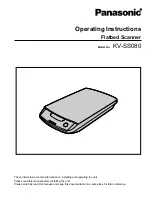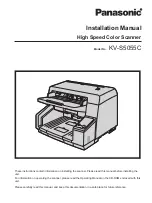
• • • • • • • • • • • • • • • • • • • • • • • • • • • • • • • • • • • • • • • • • • • • • • • • • • • • • • • • B – 3
• • • • • • • • • • • • • • • • • • • • • • • • • • • • • • • • • • • • • • • • • • • • • • • • • • • • • • • • • • • • • Glossary
B
EOP:
Engine Oil Pressure (Switch)
EOT
Engine Oil Temperature (Sensor)
EPA:
Environmental Protection Agency.
ESC:
Electronic Spark Control. An ignition
system function that warns the PCM
when “knock” is detected. The PCM will
then retard spark timing to eliminate the
knocking condition.
EST:
Electronic Spark Timing. An ignition
system that allows the PCM to control
spark advance timing. The PCM
determines optimum spark timing from
sensor information — engine speed,
throttle position, coolant temperature,
engine load, vehicle speed, Park/Neutral
switch position, and knock sensor
condition.
EVAP:
Evaporative Emissions System.
FC:
Fan Control
Freeze Frame:
A block of memory containing the vehicle
operating conditions for a specific time.
Ground (GND):
An electrical conductor used as a
common return for an electric circuit(s)
and with a relative zero potential
(voltage).
Hall Effect Sensor:
Any of a type of sensor utilizing a
permanent magnet and a transistorized
Hall Effect switch. Hall Effect type
sensors may be used to measure speed
and position of the crankshaft or camshaft
— for spark timing and fuel injector
control.
HO2S:
Heated Oxygen Sensor. See O2S.
HVAC:
Heating, Ventilation & Air Conditioning
(System)
I/M:
Inspection and Maintenance. An emission
control program.
IAC:
Idle Air Control. A device mounted on the
throttle body which adjusts the amount of
air bypassing a closed throttle so that the
PCM can control idle speed.
IAT:
Intake Air Temperature (Sensor)
ICM:
Ignition Control Module.
IMRC:
Intake Manifold Runner Control
IPC:
Instrument Panel Cluster
ISC:
Idle Speed Control. A small electric motor
mounted on the throttle body and
controlled by the PCM. The PCM can
control idle speed by commanding the
ISC to adjust its position.
ISO:
International Organization of
Standardization.
KAM:
Keep Alive Memory
Knock Sensor (KS):
Used to detect engine detonation or
“knock.” The sensor contains a
piezoelectric element and is threaded into
the engine block. Special construction
makes the element sensitive only to
engine vibrations associated with
detonation.
Knock:
Uncontrolled ignition of the air/fuel
mixture in the cylinder. Also referred to as
detonation or ping. Knock indicates
extreme cylinder pressures or “hotspots”
which are causing the air/fuel mixture to
detonate prematurely.
KOEO:
Key On — Engine Off.
KOER:
Key On — Engine Running.
LCD:
Liquid Crystal Display.
LT:
Long Term fuel trim.
M/T:
Manual transmission or manual transaxle.
Summary of Contents for Super AutoScanner CP9145
Page 1: ...6XSHU XWR6FDQQHU 3 3 8VHU V 0DQXDO...
Page 8: ...Safety Precautions Safety vi...
Page 20: ...Getting Started 1 10 1 Getting Started Notes...
Page 79: ...A 9 Data Link Connectors A Data Link Connector Notes...
Page 80: ...Data Link Connectors A 10 A Data Link Connector Notes...
Page 87: ...B 7 Glossary B Glossary Notes...
Page 88: ...2004 ACTRON MANUFACTURING CO All rights reserved 0002 004 2421...






































